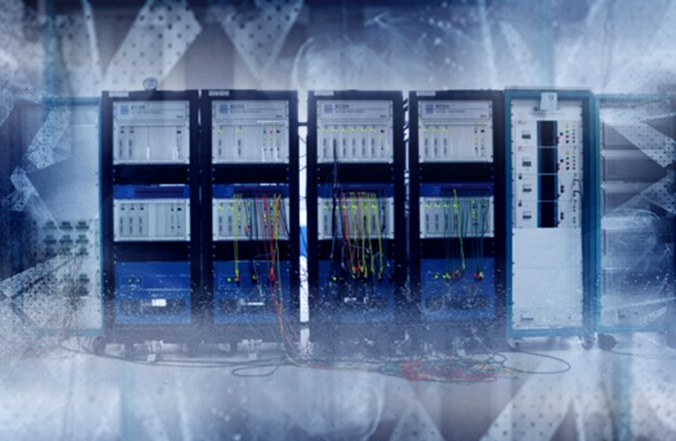It’s no secret that efforts for connecting large-scale wind, solar, battery and other inverter-based resources (IBRs) to the electric power grid are accelerating. As per the U.S. Department of Energy (DOE) assessments, solar power alone could account for as much as 40% of the nation’s annual electricity generation by 2035. The share of IBRs during certain times of the day, may approach 100% of an instantaneous load.
All these variable, renewable resources come with environmental and economic benefits. But IBRs being different from those traditional power plant technologies can impact the reliability of the bulk power grid. As the penetration levels of IBRs increase and the technology evolves, it could potentially change the very nature of the grid’s dynamic performance as their sizes and numbers grow. Whether this helps or harms future electric system reliability does depend on the choices we make today, as the IBR plants connections will operate for decades to come. Currently, there is no one single document of consensus performance requirements covering IBRs interconnected with transmission and sub-transmission systems.
To advance grid stability and reliability in the near and long-term future, IEEE Standards Association (IEEE SA) has recently published a new standard the IEEE 2800™–2022, Standard for Interconnection and Interoperability of Inverter-Based Resources (IBR) Interconnecting with Associated Transmission Electric Power Systems. This new standard can help equipment manufacturers, project developers, transmission planners, and power grid operators improve the quality of the inverter and facility performance to enhance the stability of the power grid over a transmission planning horizon.
IEEE 2800 establishes a uniform set of minimum technical requirements for the interconnection capability, and performance of IBRs interconnecting with electrical transmission and sub-transmission systems. It outlines performance requirements for reliable integration of IBRs into the bulk power system that include but not limited to:
- Voltage and frequency ride-through
- Active power control
- Reactive power control
- Dynamic active power support under abnormal frequency conditions
- Dynamic voltage support under abnormal voltage conditions
Power quality - Negative sequence current injection, and system protection
These functional default settings provide a range of performance monitoring and model validation, different types of tests, plant-level evaluations, and other verification means. The specified requirements are intended to apply over the entire lifetime of the IBR plant. Conformity to the requirements should be verified prior to commissioning and also in periodic intervals after commissioning.
Future planning studies related to an IBR plant will be built with some of these details as they become available, once the IBR plant is closer to being commissioned and will be an iterative process of studies required as the data gets closer to the as-built information.
Along with positive-sequence stability models, Electromagnetic transient (EMT) models may be needed to study certain issues involving IBRs particularly where IBRs may interact with:
- Other power electronic controls such as existing HVDC, STATCOMs, SVCs, or other inverter-based resources.
- Low short circuit strength networks, or near series capacitors.
Typically, TS Operator/TS Owner’s outlines the requirements for IBRs to provide EMT models in situations where an EMT-type study may be required now or in the future. EMT models may be required for all newly interconnecting inverter-based resources or on a case-by-case basis.
To ensure consistent EMT models based on the type of study being performed and the specific EMT simulation tools being used, detailed EMT modeling requirements shall come from TS Operator/TS Owner.
Utilities/ISOs ask all renewable energy developers to supply their plant models in PSSE and/or PSCADTM that include the converter model and Power Plant Controller (PPC) model as part of their document submittals during their grid integration application approval process. The converters come from different manufacturers. The PPC can be supplied by the same converter manufacturer, or it can be supplied by a systems integrator like Nor-Cal Controls. Either way, utilities require the PSSE or PSCAD model for whatever PPC will be installed in the plant.
Nor-Cal Controls recently purchased a RTDS (Real Time Digital Simulator) which allows our team to perform hardware in loop (HIL) simulations. The RTDS simulator was used for validating a PSCAD™ model of Nor-Cal Control’s PPC against it’s General Electric PLC based hardware controller. In addition, the testbed can also be used as a productivity tool for a wide range of functions, such as testing a PPC concept in the R&D phase to a System Acceptance Test (SAT) of a fully assembled PPC and protection system. This kind of an approach for controller validation during factory or system acceptance test (FAT/SAT) has significantly improved Nor-Cal SCADA systems overall quality control.
We can provide an EMT model with:
- Detailed inner control loops of the power electronics, as implemented with the actual equipment to be installed. Most OEM provided IBR unit models embed the actual firmware code into EMT model.
- All pertinent control features (e.g., external voltage controllers, plant-level controllers, phase locked loops) including expected operating modes and settings required for system specific installations, tuned to the expected or as-built controls settings. IBR unit-level and plant level controls modeled appropriately.
- All pertinent electrical and mechanical configurations include but are not limited to filters, specialized transformers, and mechanical systems that can impact electrical performance such as drivetrain controls and pitch controls.
- Based on actual firmware code, all pertinent inverter-based resource protection systems relevant to performance are modeled in detail for both balanced and unbalanced fault conditions. These would include ac over and under-voltage protection (instantaneous phase and RMS), over and under frequency protection, dc bus over and under-voltage protection, along with IBR unit overcurrent protection.
IEEE standards are voluntary industry standards, and enforcement of any of the requirements specified in this standard will require it’s adoption by the regional authority governing interconnection requirements (AGIR). An AGIR is a cognizant and responsible entity that defines, codifies, communicates, administers, and enforces the policies and procedures for allowing electrical interconnection of inverter-based resources interconnecting with associated transmission electric power systems.
Nor-Cal Controls is committed to Grid stability and reliability, and
we stand by our customers to ensure their projects are successful. We can help you with EMT models for Power Plant Controllers for your existing or upcoming renewable energy (PV-Solar/Wind) projects, with or without BESS, as well as r standalone BESS projects. Get in touch with us today to discuss your custom SCADA System, EMS and MET Station solution needs.





